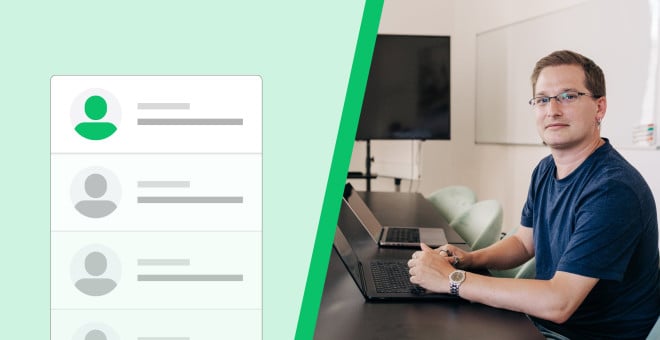How to use PPC to grow your email list

Looking for ideas to grow your email list? The quickest way to get more leads is to harness the power of pay-per-click (PPC) advertising.
PPC and email marketing go together like peanut butter and jelly. Paid advertising helps to reach your potential customers, which you can later nurture with your email campaigns.
In this article, you’ll learn how to maintain consistent communication across both marketing channels and successfully turn your leads into paying customers.
Once you’re done reading, you’ll be equipped with best practices and tricks to work on your own PPC strategy and enjoy the increased sales. Sounds good?
Let’s get into it!
Why you should use PPC and email marketing together
Today, people expect a consistent customer experience across multiple digital channels when interacting with a brand or business. For you, as a business owner, this means that you need to foster cross-channel marketing.
In other words, you need to make sure your communication is personalized and consistent across different touchpoints with your brand.
Aim to create structures where your target audience can seamlessly get closer towards completing your desired action as they go from paid ads to your email signup forms.
When used together, PPC and email marketing can help to:
Build more targeted email lists
Improve your open rates
Expand audiences
Test new ideas faster (like testing email subject lines)
Maximize ROI
Now, let’s look at the tips on how to grow the number of your subscribers with PPC.
How does capturing emails with PPC work (step by step)
Now, we’ll walk you through the process of getting more subscribers with paid ads. You’ll learn how to create content for different types of customers and how to tailor personalized ads for them. You’ll also get an overall understanding of how to acquire more leads before we move to more specific tactics.
Step 1. Create separate landing pages for different personas
First, you need to think about your target audience. Who are the people you want to sell to? Chances are you have more than one buyer persona. A buyer persona is a semi-fictional representation of your ideal customer based on customer data.
Each buyer persona will respond to different Unique Selling Propositions (USPs). Since you have about 15 seconds to catch your visitors’ attention, keep them reading, get the urge to subscribe to your email list, and actually do it, you need to pull the right strings instantly.
For instance, let’s say you run a beauty e-commerce store and are crafting a skincare marketing strategy to sell your products. A middle-aged woman may not need a cream for clean, acne-free skin. But most teenagers will!
And what if you have three more types of your ideal customers? Creating different landing pages for each buyer persona will help you deliver the right message in a matter of seconds and increase your conversion rates.
💡 TIP: Write a headline that drives action or highlights the value for your ideal audience.
For example, the landing pages below let you know right away that you’ll get something in exchange for your email.
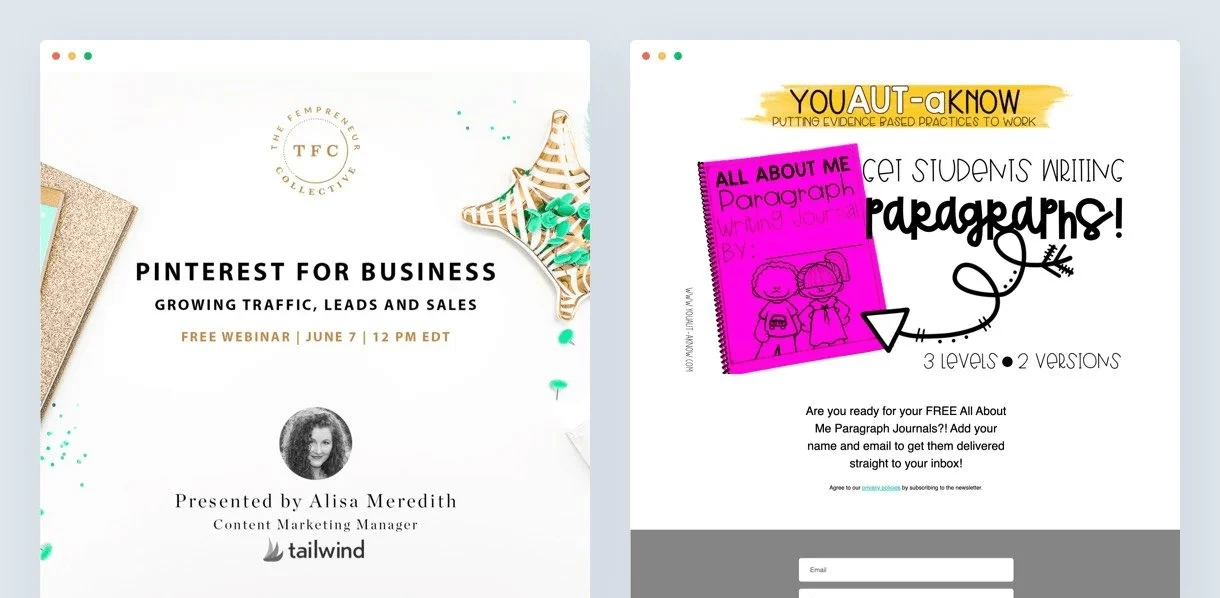
Learn more about effective landing page creation
Want to be 100% confident your potential customers will give their email addresses to you? We’ve put together a few resources with more expert tips on creating landing pages that convert and driving traffic with online ads. Check them out:
Read our article on 11 tips for building effective landing pages
Get more tips on advertising your landing page
Watch our video tutorial on how to create a landing page
Step 2. Run targeted ads for different landing pages
Now that you have your landing pages ready, you need to put them out there. One of the fastest ways of putting your landing page in front of your audience is to run targeted paid ads. To do this correctly, you’ll need to optimize your landing pages according to Search Engine Optimization (SEO) best practices and carry out some keyword research for your paid ad campaigns.
The key to good PPC keyword research is asking the right questions:
What kind of search queries would my potential customers use to look for my products or services?
What are the most specific keywords that fit my niche?
What are the possible variations and synonyms for my keywords?
What are the possible misspellings for my keywords?
Though technically PPC ads entail many advertising platforms, Google Ads (formerly Google Adwords) is the most popular type of PPC advertising—it’s almost the synonym for PPC. This platform enables marketers to run ads on Google’s search engine and other properties that belong to Google.
💡 TIP: Check Google’s view on landing page experience to make sure your landing pages meet the criteria for your ads to run. Here are the key things to consider:
Your content needs to be relevant, useful and original
Be transparent about your business
Ensure easy mobile and computer navigation
Decrease your landing page loading time
Also, read our guide on SEO basics—it’s beginner-friendly and will help you make sure your landing pages drive traffic to you.
Step 3. Capture emails with a clear call-to-action
The objective of your landing pages is to capture emails. Make it obvious with a clear yet informative sign-up box.
A call-to-action (CTA) is a phrase that tells your visitors what to do.
Some overused examples of CTAs include “Read more,” “Learn more,” “Download,” “Buy now”—you get the picture. Such CTAs are way too generic to be motivating by themselves. However, you can make them work when they’re preceded with a clear value proposition which also qualifies a CTA. See the example below:
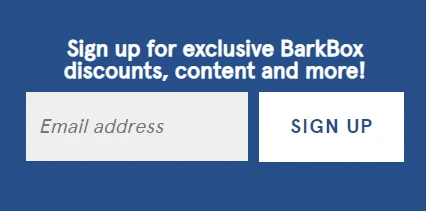
For your CTA to work, you need to make it clear what people will get from subscribing to your email list.
It’s also a good idea to let people know how often you’ll be sending them emails:
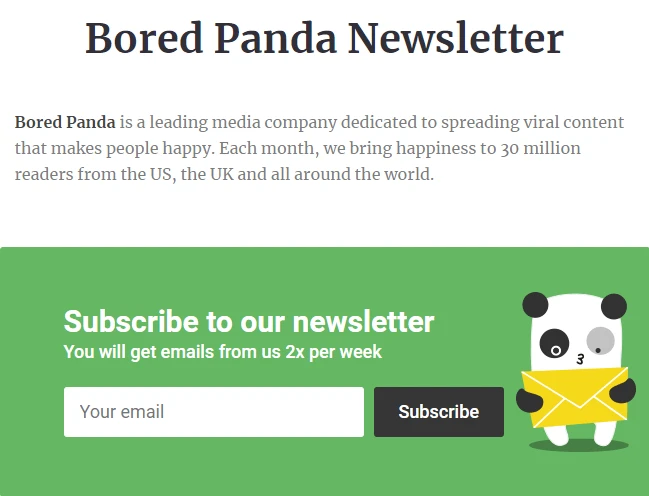
How to use Google Ads at different stages of your marketing funnel
Now, let’s look at how you can use Google Ads Audiences to get email subscribers at various stages of the marketing funnel.
A marketing funnel shows the steps your customers go through before they decide to buy from you. Think of it as your customer journey.
Here’s what a marketing funnel looks like:
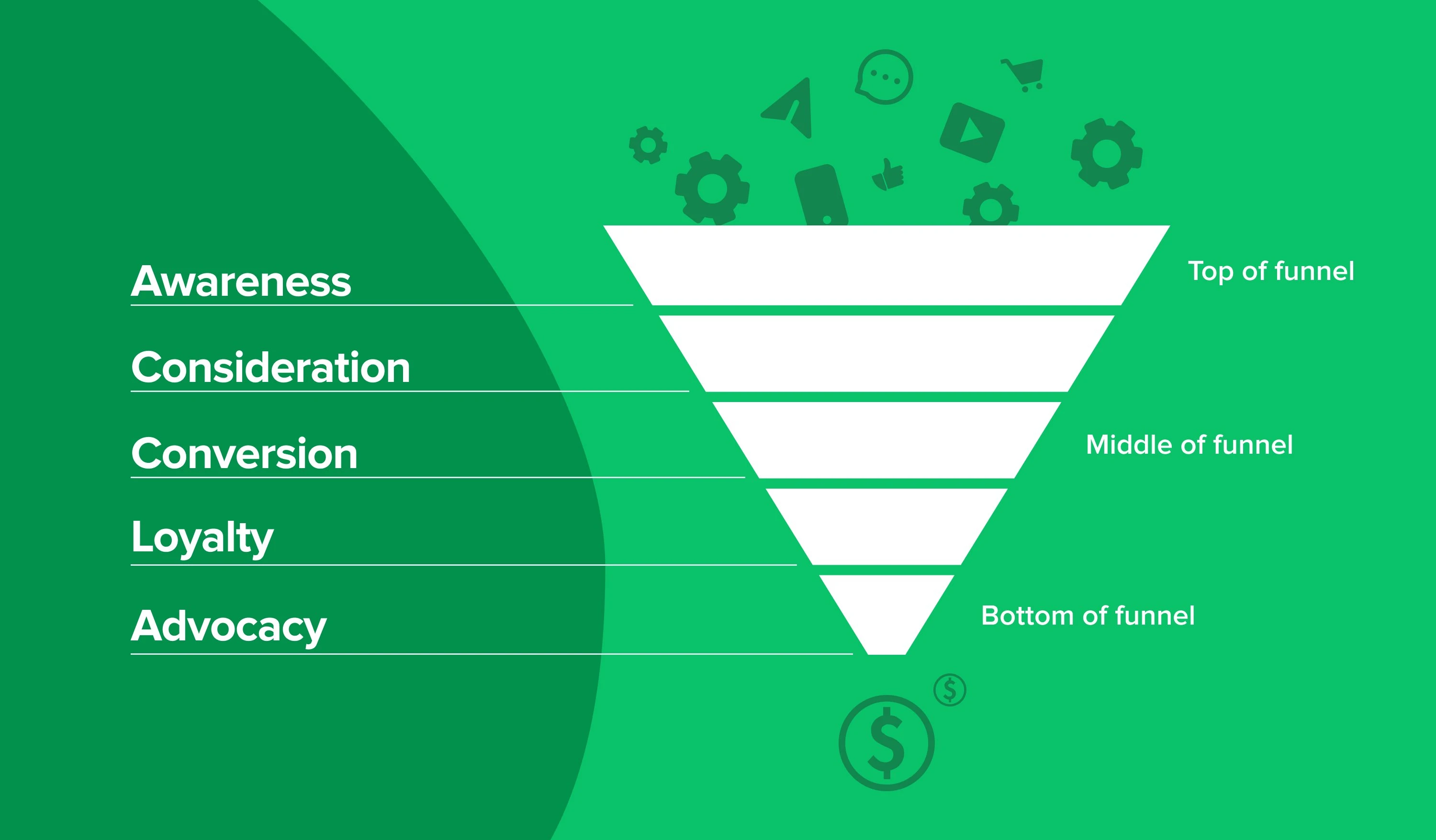
A marketing funnel has three main stages:
Top of Funnel (TOFU): When your target audience becomes aware of your products or services. You’re gathering your leads at this stage, also called the “Awareness” stage
Middle of Funnel (MOFU): When your leads are considering making a purchase from you, and may be comparing you with your competitors. That’s why it’s also called the “Consideration” stage
Bottom of Funnel (BOFU): The last stage of the funnel when your leads become your customers, also called the “Conversion” stage
If you want to keep your past customers coming back, you should nurture them in the “Loyalty” and “Advocacy” stages. However, today we’re talking about how to get leads in the first place, so let’s focus on that.
Let’s see how you can use PPC to get leads for your Top-funnel and Mid-funnel audiences.
1. Top-funnel audiences: Give useful information through search ads
By using PPC, you can get in front of people who are not ready to buy yet but are looking for related information—your top-funnel audiences. When you target such people, you get quality leads you can market to later.
In a recent study, 75% of people said that paid ads make it easier to find information.
So, when browsing Google for answers, your paid search ad will be one of the first things people see. Given that the ad is well written, people will naturally click on it with hopes of finding a solution. Then, they will be directed to your landing page, where the rest of the magic happens.
This is what a typical search ad would look like in Google search results for people who are looking for a way to keep their dogs warm:

How to capture email addresses in this funnel
1. Answer the most common questions your target audience has right on your landing page and promise more useful information in your newsletters.
💡 TIP: Check our email newsletter templates and save time building email newsletters without needing a designer’s help.
2. Offer a lead magnet that can be accessed only by becoming your subscriber. It could be anything from a downloadable PDF and whitepapers to a separate landing page with an embedded informational video.
💡 TIP: Automate your lead magnet sequence and make sure that your content offers are sent out immediately—without any delays. That way, your prospects can immediately enjoy the content they’ve applied for, and you save yourself tons of time managing your email campaigns.
But… What should I write about on those landing pages?
Check your Google Analytics to see how people come to your site organically. What are the keywords that bring in the most traffic? Which blog posts (provided you have a blog) get the most attention?
Also, think about what people ask the most when they contact your customer support. What topics get the most engagement on your social media?
In case your business is new and you don’t have much data to rely on, you can always check your competitors’ content for ideas. Or you can do a quick search on Google around your business niche to see what people are asking for.
Let’s look at another way to gather leads at the top of the funnel.
2. Top-funnel audiences: Use Google Display ads to raise awareness
PPC can also help you get more subscribers by targeting people who don’t know about your business yet. These are your top-funnel audiences.
People in this segment are probably not looking for any solutions you offer, but they have certain characteristics that make them a good fit for your product or service.
You can get in front of top-funnel audiences with Google Display ads.
You’ve definitely seen Display ads even if the name may look unfamiliar now. They’re those image ads that appear when you’re reading an article, watch a YouTube video, or use your favorite mobile app.
Unlike search ads, Display ads aren’t related to search queries. Instead, you can show Display ads to targeted audiences across the Google Display Network (GDN).
The Display Network is a group of over 2 million sites, videos, and apps where your ads can appear. GDN sites reach over 90% of people on the Internet worldwide!
Display ads are highly visual—you can use images of various sizes and even animate them.
Have a look at a few Display ads examples below.
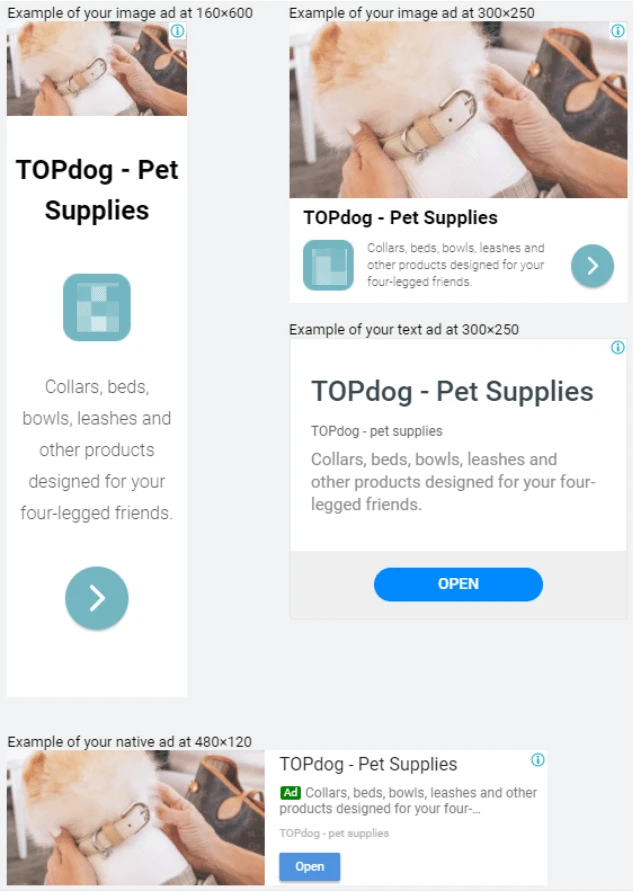
How to capture email addresses in this funnel
One of the easiest ways to get people’s attention with Display ads is to use seasonal events. Run Display ads for such occasions as Valentine’s Day or Black Friday and direct people to thematic landing pages. Once there, give them an incentive to subscribe to your email. For example, give them a discount, special offer, free shipping.
💡 TIP: You can also use Google Display ads to test visuals for your emails. With paid advertising, the results are quick, so you can see which images will work in your email campaigns too.
3. Mid-funnel audiences: Attract people actively looking for your products on Google
What do you do when you want to buy something? You Google it. For this reason, search engine advertising is one of the most popular forms of PPC. It lets marketers bid for ad placement when someone searches for a keyword related to their products or services.
For example, if you’re selling pet products and bid on the keyword “dog collars,” your ad may show up at the top of Google search results.
How to capture email addresses in this funnel
1. Advertise your most important product pages: This is the most straightforward method. You don’t even need to create a separate landing page. Advertise your most important product pages but make sure your email subscription box is visible early enough. Another option is to create a pop-up form. Find inspiring examples of great pop-up forms here.
Since people who come to your site will likely have a buyer’s intent because they’re searching for something specific (like “dog collars”), they probably won’t be interested in getting educational content. Encourage them to subscribe to your emails to get exclusive deals first or the news on the latest arrivals.
Here’s a creative example by BarkBox on how to get more email subscribers:
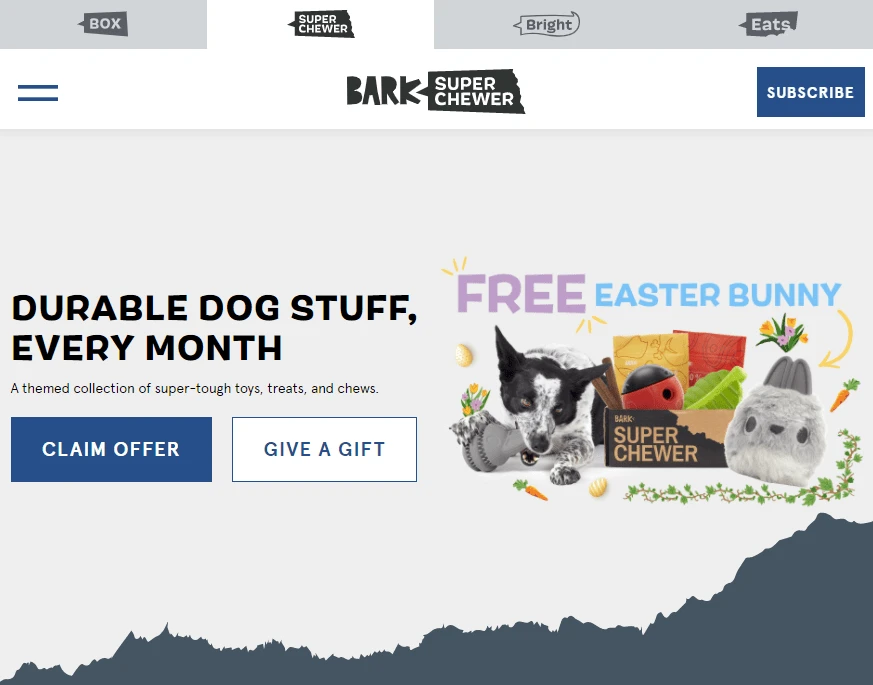
They use a free toy as an incentive to get new customers and collect their email addresses.
2. Offer a discount: Let people know in your ad that they can get a discount for the product they’re searching for. Then, once you direct them to your landing page, ask them to subscribe to your email list to get the exclusive discount right to their email.

3. Create quizzes for thematic product collections: Another way to capture your prospects’ attention is to create thematic landing pages that are also interactive.
Let’s go back to your imaginary dog product store. You could create a landing page dedicated to the best raincoats for dogs in 2021. Include a quiz on choosing the best raincoat for puppies of different sizes and breeds, and have the results sent to your visitor’s emails.

BONUS: Use Gmail Sponsored Promotions (GSP)
You can also use PPC to get right into your potential customers' inboxes. Gmail ads appear at the top of your inbox tabs. Once you click on them, they can expand into an ad with videos and images that remind you a bit of an actual email.
Here’s what a Gmail ad looks like:
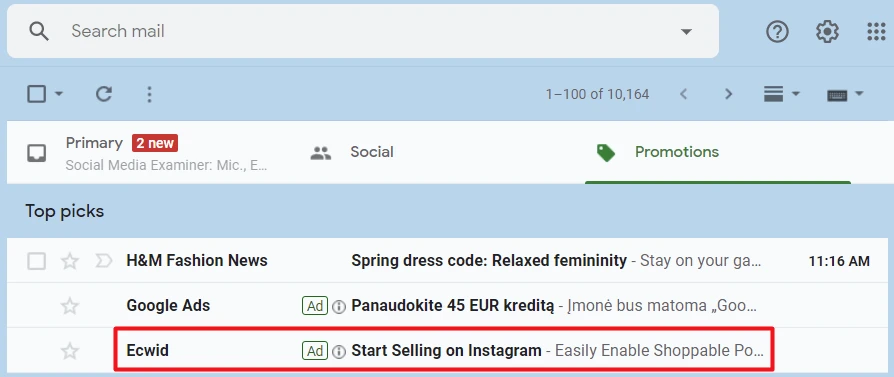
Use Gmail ads if you don’t have many subscribers yet, and you need to raise your brand awareness NOW! However, keep in mind that they’re still not as effective as traditional email campaigns as, unlike your newsletters, people don’t opt in to get Gmail ads.
Over to you
By using different marketing channels together, you can improve your messaging and build lasting customer relationships. The nature of PPC advertising allows for building segmented email lists that you can later move down the funnel with highly targeted email marketing campaigns.
With Google Ads, you can get new subscribers that cover all stages of the marketing funnel! PPC campaigns also come in handy for leveraging remarketing campaigns when you don't want to overload your subscribers with emails.
Plus, don’t forget that you can always look for marketing automation software that will make running PPC ads easy for you!
Want more tips on growing your email list? Check out our ultimate guide!

Julija Televiciute is a freelance copywriter at sixads, a Shopify traffic app that helps automate ads on Facebook, Instagram, and Google. Specialized in copywriting, social media, and dog memes, she helps businesses get creative with ideas for content that creates value and sells. Want to know more ways to attract buyers to your online store? Connect with sixads on Facebook, Twitter, or LinkedIn!
